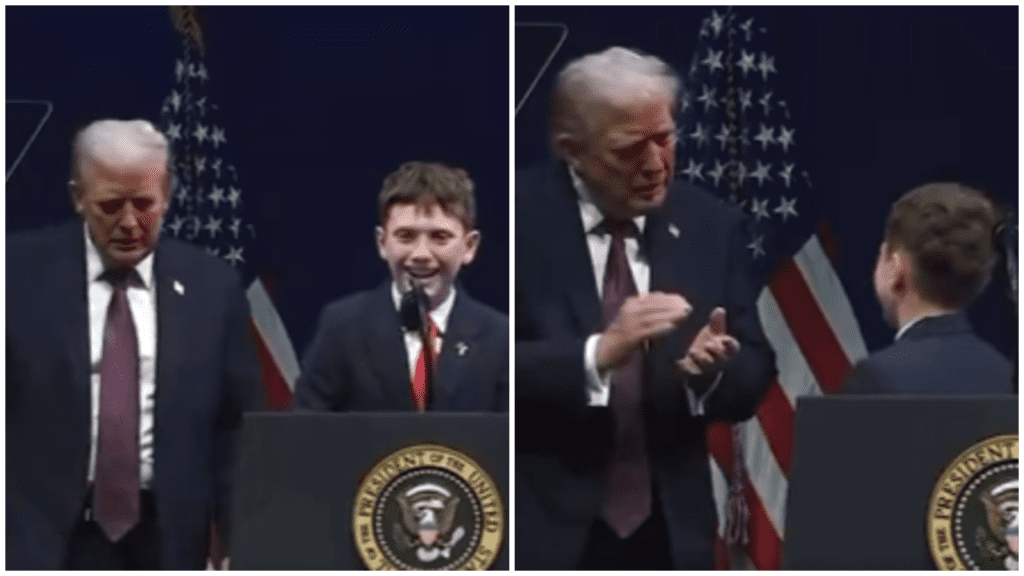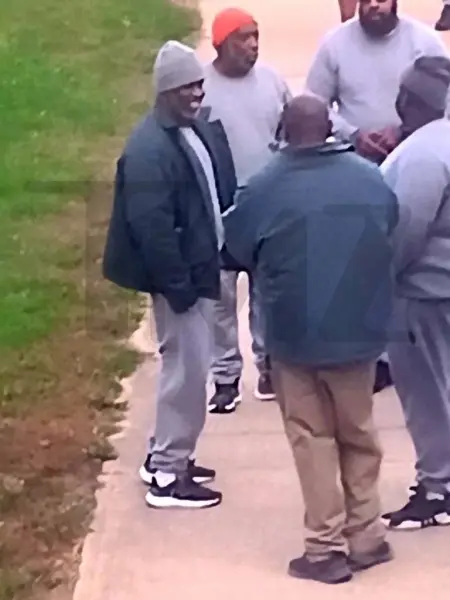Christian Fifth-Grader Shane Cias Speaks with President Trump: “They Made Me Teach Gender Change—I Just Wanted to Trust God”
I’ll never forget the way this moment made me pause—it wasn’t in a fancy hall or under dramatic lights, but in the voice of a 10-year-old named Shane Cias. He stood on stage with President Trump, and simply shared something so brave it caught me off guard. “When I was in fifth grade,” Shane began, “my school forced me to teach my kindergarten buddy about changing his gender… using a book called My Shadow is Pink.” He paused, took a breath. “It hurt a lot.”
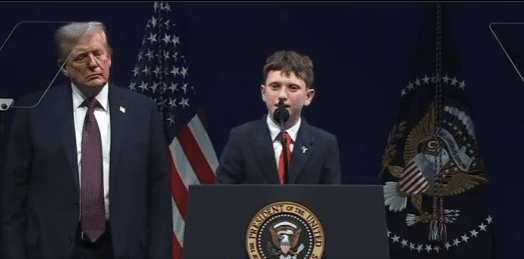
There was something so raw about that. A child, with unwavering faith, talking publicly about feeling forced into a lesson that collided with his beliefs—beliefs he doesn’t just read about, but lives out through his Christian faith. He said the school used a book that taught children they could choose their gender based on feelings rather than the way God made them. Frustrated, scared, he and his family spoke up—and the backlash was crushing. Bulls landed on Shane in the halls of his school, and his family felt cornered by the very place that should have felt safe.
He looked around, softly but firmly said, “I believe kids like me should be able to live our faith at school without being forced to go against what we believed.” That sentence struck me, because when I was a kid I remember wondering, where do our beliefs have to whisper and where can they stand loud? For Shane, being Christian meant more than a Sunday routine—it’s part of how he wakes, breathes, builds trust. To hear him say his faith meant “everything” was not a religion pitch—it was truth in a small voice with big conviction.
After watching that video—just under a minute of speech—I kept thinking about how courage fits in small hearts. He didn’t ask for applause. He sounded quiet, steady, like someone who just knew. It’s easy to get lost in the swirl of rhetoric about schools, gender ideology, and politics. But Shane’s story stripped it back to something personal and universal: sincerity. Faith isn’t a policy. It’s a feeling of stability, of right and wrong that children grow up needing. When someone tells you that’s why they matter, it rings clear.
Parents who heard Shane spoke out afterward. They thanked him. They said, yes—that’s the conversation they’re having at the dinner table. Homeschooling, talking with principals, navigating worksheets and assemblies that don’t always reflect their home values. Some of them shed tears watching him because it wasn’t just his story—it was millions of silent stories of families trying to hold onto spiritual grounding when school feels like another battlefield.
Still, others pushed back, worried about what a push for faith in schools can mean for children who believe differently. They reminded everyone that schools are meant to be neutral, welcoming classrooms to pluralism. That struck me, too. It’s not about erasing Shane’s voice. It’s about making space for every kid—Christian, Muslim, atheist, questioning—to have their story shared without shrinking.
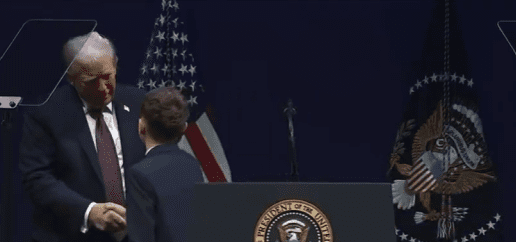
Later, the book Shane mentioned—My Shadow is Pink—was pulled from his school library. That wasn’t the point of his speech. But it was a ripple of action. Because sometimes speaking authentically has power beyond the person speaking. Shane likely didn’t expect to reshape policy. He just wanted to feel that his truth mattered as loudly as anyone else’s. That’s the thread that pulled at me.
I found myself thinking about how many times adults drown out kids by talking over them. But Shane was given a mic, and he held it gently—but firmly, in a way that made you listen. Not because he shouted, but because he stood steady in what was true to him. We’re all walking around with our own mixture of silence and shouting. A kid this young reminded me that courage isn’t only in big speeches—it’s in small, honest standpoints.
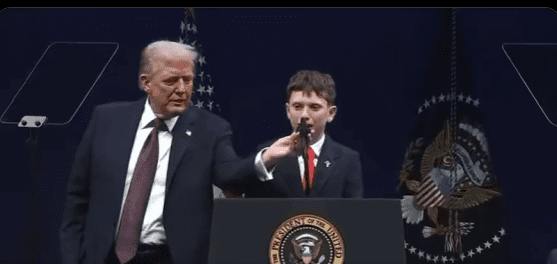
So what happens now? People are debating. Lawmakers and school boards are listening. And families are talking—more, and more openly—about what kids are learning, who teaches it, and whether accommodations are possible when beliefs differ. Those conversations can be messy, but maybe they’re overdue. Because faith, especially in children, isn’t something you paper over with policy. You meet it with respect.
At the end of the day, when the crowd cleared and the lights dimmed, it wasn’t the presence of the President or the stage that struck me—it was Shane’s heart. A 10-year-old, unwavering, believing deeply in what he’d been taught at home and wanting that belief honoured quietly in crowded classrooms. That image—quiet, firm, true—has stuck with me.
